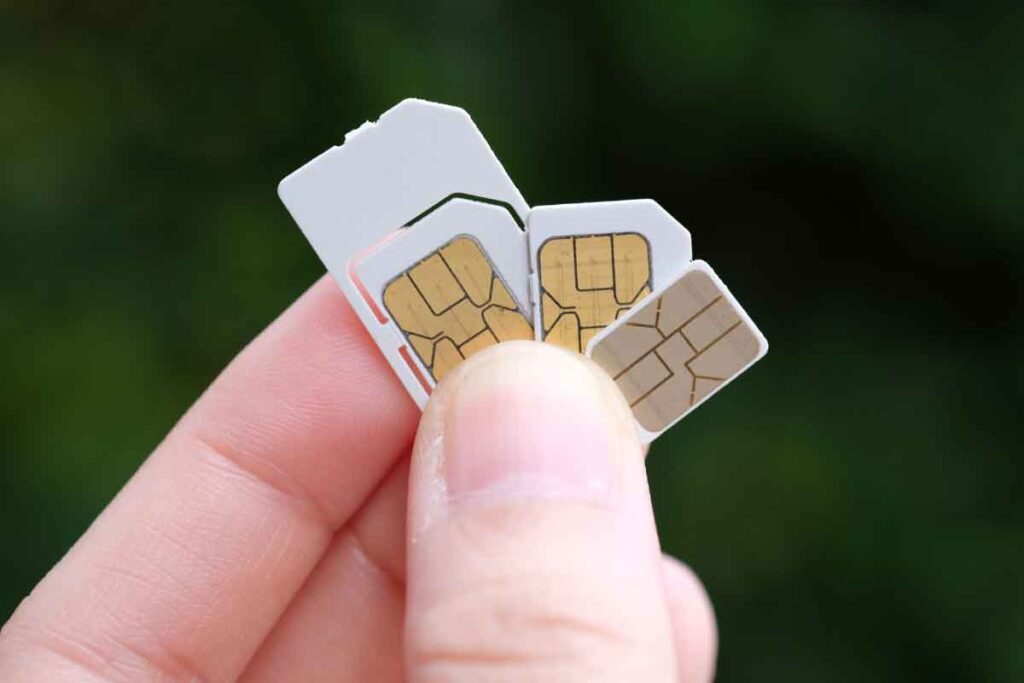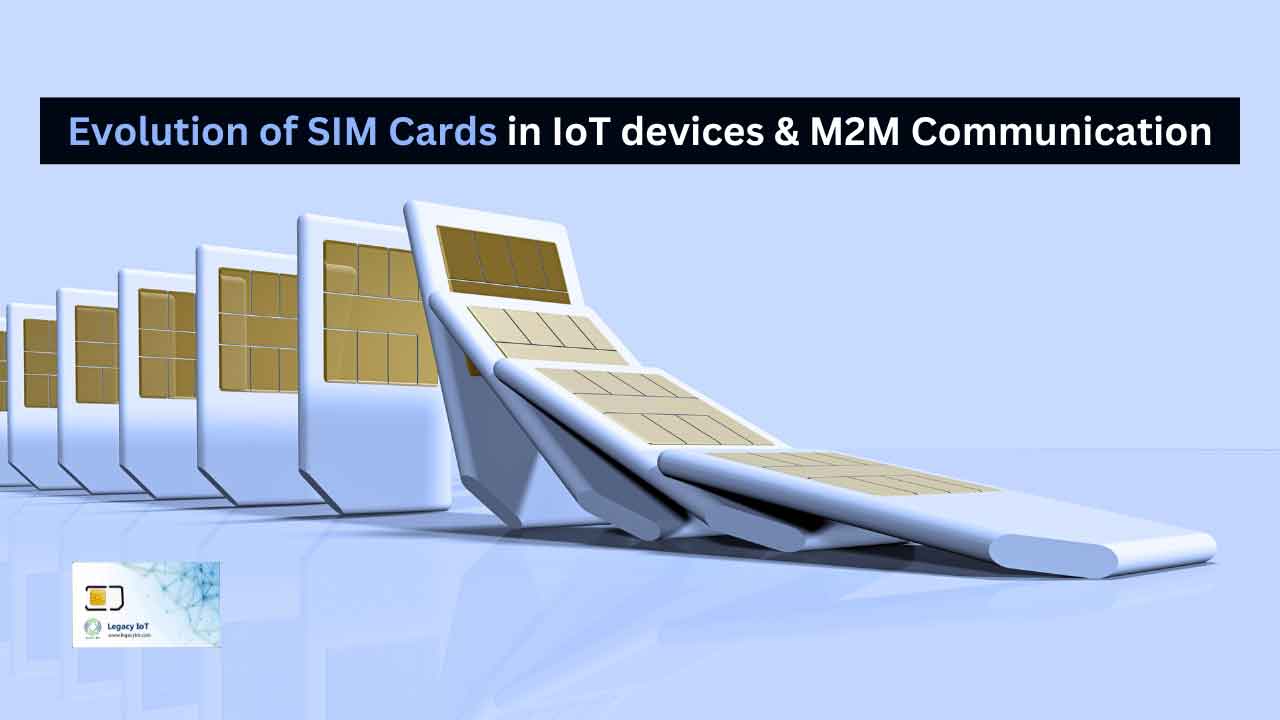In the fast-paced world of the Internet of Things (IoT), Machine-to-Machine (M2M) communication stands as a cornerstone for seamless connectivity.

Central to this process is the SIM card, whose evolution in design and functionality has been pivotal in advancing IoT and M2M technologies. This article explores the various SIM card form factors, from traditional SIMs to the innovative embedded SIM (eSIM), and their crucial roles in IoT and M2M communication.
Traditional SIM Form Factors: 2FF, 3FF, and 4FF
2FF – The Standard SIM Card
The 2FF, commonly referred to as the standard SIM card, measures 25mm x 15mm. As the first widely adopted SIM format, it has been fundamental in mobile communication. However, its large size is a drawback in compact M2M devices, where space is a premium.
3FF – The Micro SIM Card
The 3FF or micro SIM card, measuring 15mm x 12mm, offers a smaller alternative. It became popular during the transition from older mobile devices to more modern ones. Yet, for M2M applications requiring highly compact solutions, the micro SIM still falls short.
4FF – The Nano SIM Card
The 4FF or nano SIM card is the smallest traditional SIM, measuring just 12.3mm x 8.8mm. Widely used in today’s smartphones and some IoT devices, the nano SIM’s compact size is an advantage. However, its non-embedded nature poses challenges in environments requiring high durability.
Want to know the Difference Between Standard SIM Cards and M2M SIM Cards?
Embedded SIM (eSIM): The MFF2 Form Factor
What is an Embedded SIM (MFF2)?
The embedded SIM, or eSIM, in the MFF2 form factor, marks a significant leap forward in SIM card technology. Measuring a mere 5mm x 6mm, this eSIM is soldered directly onto a device’s motherboard, eliminating the need for a physical SIM slot.
Advantages of Embedded SIM (MFF2)
Compact and Space-Saving Design
The MFF2’s compact design revolutionizes M2M communication, where devices are often tiny, and space is crucial. By being integrated directly onto the motherboard, the eSIM frees up space for other essential components.
Enhanced Durability
Durability is a key advantage of the MFF2 eSIM. Since it is embedded within the device, it is less prone to physical damage, shocks, and environmental factors, making it ideal for use in extreme conditions like wildlife tracking or marine biology research.
Improved Security
Embedded SIMs offer superior security compared to traditional SIMs. Their integration into the device makes them resistant to tampering and physical extraction, a critical feature for applications where data security is paramount.
Remote Provisioning
One of the standout features of embedded SIMs is their capability for remote provisioning. Updates and network provider changes can be performed over-the-air (OTA), eliminating the need for physical SIM replacements. This is particularly beneficial for IoT devices in remote or difficult-to-reach locations.
Longevity and Reliability
Embedded SIMs are designed to endure extreme temperatures and harsh environments, significantly enhancing their longevity and reliability. This makes them perfect for industrial IoT applications where devices face rigorous operating conditions.
Use Cases of Embedded SIM (MFF2) in M2M Communication
Embedded SIMs are ideal for a variety of applications, including wildlife tracking, marine biology, smart agriculture, industrial IoT, and automotive telematics. Their compact size, durability, and ability to withstand harsh conditions make them well-suited for environments with high pressure, salinity, or temperature variations. In vehicles, the MFF2 eSIM’s resistance to temperature fluctuations and vibrations ensures reliable connectivity for navigation, diagnostics, and emergency services.
Conclusion
The evolution of SIM cards from traditional forms like 2FF, 3FF, and 4FF to the advanced embedded SIM (MFF2) has been crucial in the development of IoT and M2M communication. While traditional SIMs have limitations in size and durability, the embedded SIM offers a compact, secure, and robust solution for a wide range of M2M applications. As the IoT or Internet of things landscape continues to grow, the role of SIM cards will become increasingly vital in enabling seamless, reliable communication between devices.





